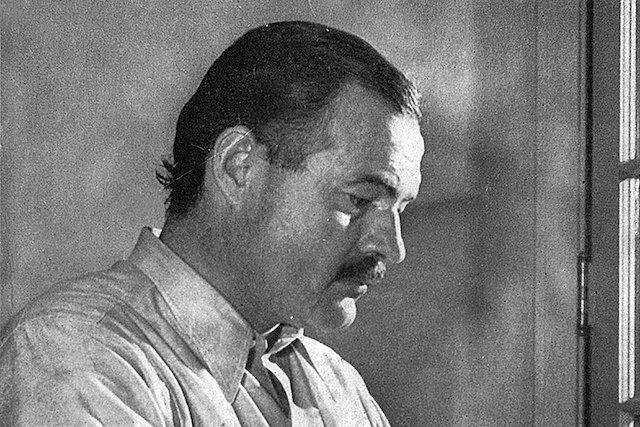Initially known as the Bureau of Investigation (BOI), the FBI came into being in 1908. Since then, it has handled a wide variety of cases as it claims jurisdiction over 200 categories of federal crimes. With such a broad scope, it’s no wonder that the FBI had to deal with more than its fair share of quirky questionings and strange studies.
10. The Majestic 12

During the 1980s, a memo started circulating in ufologist circles that was purported to be a leaked government document. It referenced the existence of a shadowy organization known as Majestic 12, or MJ-12, which consisted of high-level government officials, military leaders, and scientists. Formed under the executive order of President Harry Truman, their purpose was the covert investigation and recovery of alien aircraft.
Although the document became public knowledge in the 80s, it was dated to 1952 and represented confidential correspondence between President Eisenhower and the CIA. It apprised the president of the organization’s investigation efforts into the extraterrestrial crash from Roswell, New Mexico. Among the members of MJ-12 were science administrator Vannevar Bush, first U.S. Secretary of Defense James Forrestal, and biophysicist Detlev Bronk.
Both the FBI and the Air Force Office of Special Investigations (AFOSI) conducted their inquiries into the leaked documents and concluded that they were completely bogus. No such committee had ever been formed and Harry Truman’s signature, although genuine, was a photocopy obtained from a different document.
Over three decades have passed since the emergence of Majestic 12 and the concept still remains popular with UFO true believers. If anything, having the FBI dismiss it as a hoax only strengthened the belief for some conspiracy theorists that it is all part of a cover-up.
9. The Vulgar Song
https://www.youtube.com/watch?v=CCY0bAPLZ1w
In 1955, doo-wop musician Richard Berry composed the rock classic “Louie, Louie.” It has been covered dozens of times, but most successful was the 1963 version by The Kingsmen. Lead singer Jack Ely employed a strange, slurred singing style that made some of the lyrics nearly unintelligible. This prompted the rumor that the lyrics were obscene. The concept became so widespread that the FBI stepped in to investigate.
All over the country, concerned parents were writing government officials to warn them of the filth that was corrupting the youth of America. They often included copies of the vulgar lyrics from “Louie, Louie,” but they tended to differ since they couldn’t actually hear the words and let their imaginations fill in the blanks.
The FBI dedicated two years looking into this pressing issue and amassed a file over 100 pages long. They heard claims that the obscene lyrics became clearer if you slowed down the record, or played it faster, or played it backwards, so they tried them all. The conclusion of the investigation was that the recording was “indecipherable at any speed.”
8. The Elusive Creature

Normally, the FBI conducts criminal investigations. However, it does make exceptions every now and then “in the interest of research and scientific inquiry.” During the 1970s, the bureau made one such exception and looked into the claims of a cryptozoologist who said he had physical evidence of Bigfoot.
Peter Byrne started the “Bigfoot Information Center and Exhibition” in Oregon in the 1960s. A decade later, he found some hair and skin samples which be believed belonged to the elusive beast. Back then, there weren’t many places that could run tests to determine the origins of the hairs so Byrne began writing to the FBI.
In 1976, Assistant Director Jay Cochran with the bureau’s scientific and technical services division agreed to examine the evidence. FBI analysts looked at the structure of the hairs and compared them against those of known origin and concluded that they belonged to an animal from the deer family.
7. The Hottel Memo

Although the “Guy Hottel” memo about aliens does not, strictly, refer to an actual FBI investigation, it merits inclusion because it is the most popular file available in the FBI online vault. In just two years after it was first posted in 2011, it was viewed over a million times. And, most surprisingly of all, it has nothing to do with Roswell. It concerns an unrelated event that happened three years later, in 1950.
Although it still took place in New Mexico, it involves three alien spaceships that allegedly crashed near the city of Aztec in San Juan County. The document that got everyone hot and bothered was a memo from Guy Hottel, the head of the Washington, D.C. field office, addressed to Director J. Edgar Hoover. Dated to March 22, 1950, it related the story that another FBI agent heard pertaining to the crashed ships. It also specified that each spacecraft contained three aliens, human-like but only three feet tall, wearing “metallic cloth of a very fine texture.” The memo ended saying that “no further evaluation was attempted.”
The document itself is not noteworthy. It simple related an odd incident that happened to an agent and was relayed to FBI headquarters, per protocol, to be archived in their records. It specified that the FBI never looked into the matter. However, when it was first posted online, people and even media outlets incorrectly concluded that it referred to an actual investigation into aliens conducted by the FBI. Moreover, some even thought it was connected to the Roswell incident.
6. The Writer Who Could Have Been A Spy

The last years of author Ernest Hemingway were plagued by health issues, worries, and depression that eventually drove the writer to suicide in 1961. Among his most serious issues was his resolute belief that he was being spied on by the FBI. Hemingway complained to those around him that all his phones were bugged, his mail was being intercepted and undercover agents followed him everywhere. His friends and family dismissed this as a delusion, but decades later we learned that Hemingway was absolutely correct.
During the 1980s, it was revealed that the FBI had a file on the author over 120 pages long. Their interest in him stretched all the way back to World War II, but was greatly increased over the following decades thanks to Hemingway’s frequent trips to Cuba. There were concerns that he might have been recruited to work as a spy for the Soviets.
Hemingway’s close friend and biographer A. E. Hotchner was the first to bring to surface the author’s paranoia over FBI surveillance when he wrote Papa Hemingway in 1966. Back then, he dismissed the claim, but in recent years he has expressed regret over not believing his friend. Not only that, but he is firm of the opinion that it was one of the main contributing factors that led to the Nobel Prize winner’s anguish and, eventually, his suicide. In Hemingway’s own words, it was “the worst hell. The goddamnedest hell.”
5. The Navy Officer Who Also Could Have Been A Spy

Still in World War II, the FBI launched an investigation into Inga Arvad. She was a Danish journalist and former beauty queen who moved to America and wrote for the Washington Times Herald. Before the outbreak of the war, she once interviewed Hitler and he proclaimed Arvad to be a perfect example of a “Nordic beauty.” She was even a guest at his private box during the Berlin Olympics.
This past connection made the FBI fearful that Arvad might be a spy so they surveilled her. At that time, they discovered she was having an affair with a “tousle-haired young man” initially known only as Jack. They later identified him as a 24-year-old John F. Kennedy. Once they knew who he was, Kennedy became part of the investigation. As an up-and-coming Navy officer, he would have made a good target for Arvad to turn, should she actually be a spy.
JFK’s father, former ambassador Joe Kennedy, wanted his son to end the relationship but, like many other forbidden romances, this only made it more enticing for the young Kennedy. He was reassigned to a desk job in Charleston, South Carolina, but the affair continued. So did the surveillance, as the FBI bugged their bedroom and had a front row seat for the amorous liaisons between Arvad and Kennedy. This was, eventually, what persuaded the future president to call it quits on their tryst and focus his attention on his political career.
4. The Mysterious Message

If you are good at cracking codes, then you might be able to assist the FBI. Since 2011, the organization has launched a public appeal for help in deciphering two messages which have stumped their cryptography experts for two decades.
On June 30, 1999, the body of 41-year-old Ricky McCormick was found in a cornfield off Route 367. It was in a state of advanced decomposition and fingerprints were used to ID the body. No official cause of death could be determined. Alongside the remains were two notes which consisted of random letters and numbers, sometimes separated by parentheses.
The FBI put the Cryptanalysis and Racketeering Records Unit (CRRU) on the case. Later, it turned to the American Cryptogram Association for help, but both have hit a brick wall and are looking for help from the general public.
Since word of the secret messages came out, McCormick’s friends and family expressed skepticism that he could have written them as Ricky was barely literate. If he did, there is a fair chance that the messages represent random jumbles of words and letters with no hidden meaning behind them. Even so, the CRRU still lists the Rocky McCormick homicide as one of its top unsolved cases.
3. The Otherworldly Power

During the 1950s, the FBI decided that it was time to look into extrasensory perception (ESP). Should there be any merit to the idea, it would prove immeasurably valuable to law enforcement and counterintelligence. The possible rewards were so tantalizing that the bureau simply could not afford not to “inquire into this matter more fully.” At the same time, it realized that such an investigation would be met with incredulity which is why it had to be “completely discreet and controlled” to avoid embarrassment.
The main inquiry concerned William Foos, a man from Richmond, Virginia, who gained quite a bit of attention at the time for his alleged ESP abilities. He claimed to be able to make blind people see by projecting the image into their minds.
In 1957, the FBI reached out to Foos. Although he refused to submit to any scientific testing, he did give a few private demonstrations in front of members of the CIA, Army Intelligence, and the Veterans Administration. They were not impressed with his results and said that, at no point, did Foos display any ESP abilities.
The FBI quietly stopped their relationship with Foos and, although they still made a few inquiries into ESP, we are no closer to psychic super spies than we were before.
2. The Kidnapped Heiress

One of the most massive investigations in FBI history was also one of its most bizarre. It started out as a search & rescue for Patty Hearst, a kidnapping victim and granddaughter of newspaper magnate William Randolph Hearst. By the time the FBI tracked her down, she was no longer just a victim. In what is, arguably, the most famous case of Stockholm Syndrome, Patty Hearst had joined up with her kidnappers and took part in a bank robbery and several other crimes.
But had she really turned to the dark side or was she brainwashed by her captors? That was the main question that everyone pondered after Patty Hearst was arrested and headed to trial.
On February 4, 1974, she had been kidnapped by a domestic terrorist group called the Symbionese Liberation Army (SLA). Two months later, surveillance footage showed Hearst, now responding to the name “Tania,” rob the Hibernia Bank in San Francisco’s Sunset District alongside Donald DeFreeze, the leader of the group.
DeFreeze and five other members of the SLA were killed in a shootout with the LAPD in May. Hearst stayed on the run with a few other remaining members until September of next year when she was finally apprehended by FBI agents and San Francisco detectives.
At her trial, Patty Hearst’s lawyers argued that she had been brainwashed. Whether or not this is true is still a matter of debate that’s likely to divide a room. She was sentenced to 35 years in prison, later reduced to seven. President Jimmy Carter commuted her sentence after 22 months served and Bill Clinton gave her a presidential pardon in 2001 on his last day in office.
1. The Hollow Nickel

The 2015 historical drama Bridge of Spies tells the story of a tense negotiation during the Cold War to exchange downed American pilot Francis Gary Powers for Soviet spy Rudolf Abel. However, the FBI investigation and capture of Abel is a story in and of itself.
It all started in 1953 in New York when a delivery boy with the “Brooklyn Eagle” was collecting his fee from his customers. A couple of ladies gave him a strange nickel – one which was lighter than the rest and, bizarrely, turned out to be hollow. Inside, there was a tiny photograph with a series of numbers.
Word of the strange nickel reached the police and, eventually, the FBI. The latter were convinced that the coin was a spy gadget used to pass along coded information. They began analyzing the message, as well as keeping an eye out for other similar incidents all over the country.
For a while, it seemed like the investigation was destined for the “unsolved” column, until the solution walked right through the door. Specifically, it walked through the door of the US embassy in Paris.
His name was Eugene Mäki, an American-born laborer who moved back to the United States from Finland. In reality, he was Reino Häyhänen, a Russian spy who wanted to defect because he enjoyed his life in America and did not want to return to Soviet Russia.
Häyhänen was very forthcoming with information regarding the secrets of his trade. He showed FBI agents the various hollowed out items used to carry messages and the “dead drops” where they were left and picked up. He also gave up his two KGB contacts. One of them was already back in Russia and beyond the reach of the FBI. The other was Rudolf Abel, real name William August Fisher.
As for the coded message inside the hollow nickel, it simply welcomed Häyhänen to the United States and gave basic instructions on getting started.